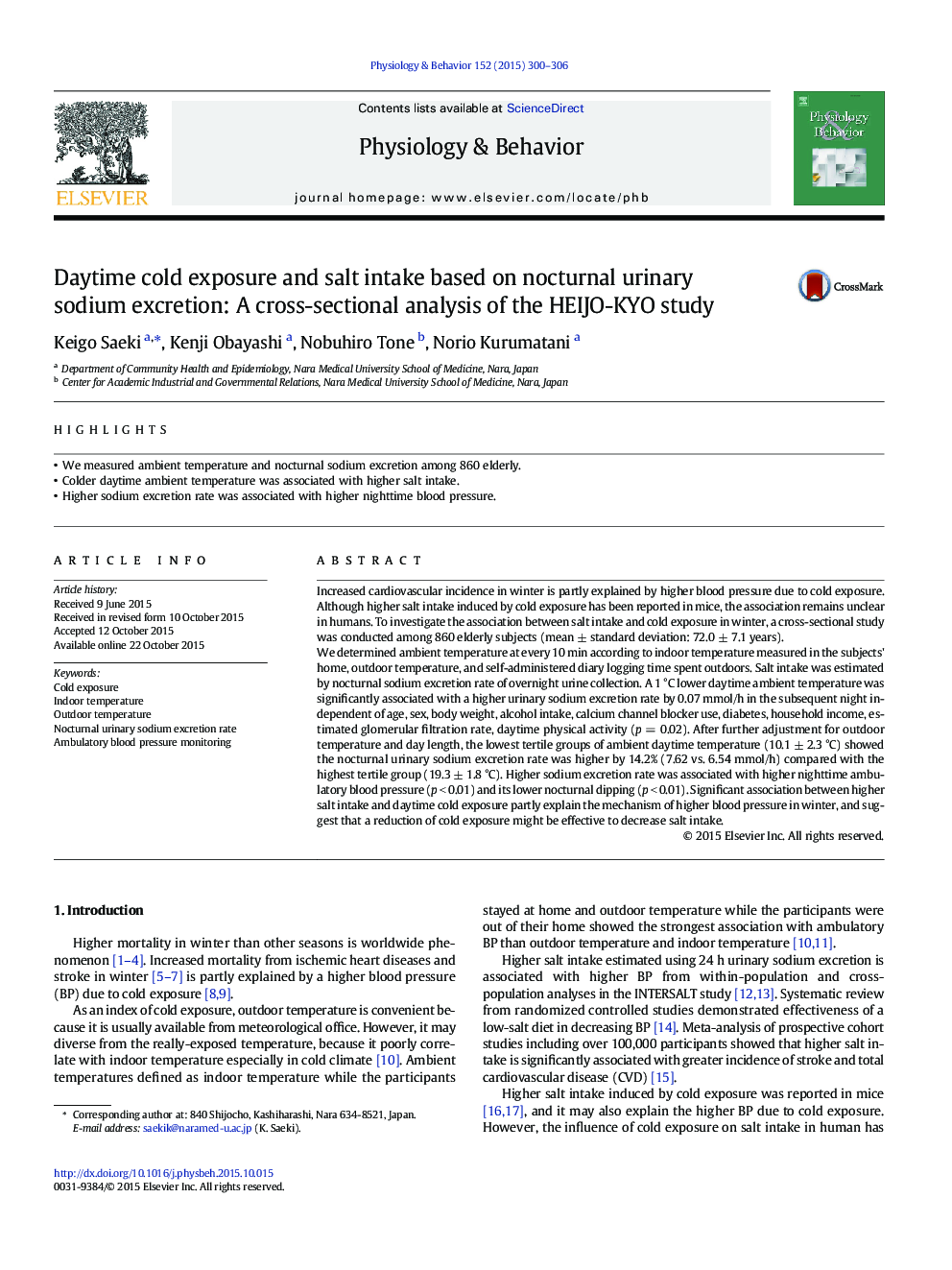| کد مقاله | کد نشریه | سال انتشار | مقاله انگلیسی | نسخه تمام متن |
|---|---|---|---|---|
| 5923105 | 1166292 | 2015 | 7 صفحه PDF | دانلود رایگان |
عنوان انگلیسی مقاله ISI
Daytime cold exposure and salt intake based on nocturnal urinary sodium excretion: A cross-sectional analysis of the HEIJO-KYO study
دانلود مقاله + سفارش ترجمه
دانلود مقاله ISI انگلیسی
رایگان برای ایرانیان
کلمات کلیدی
موضوعات مرتبط
علوم زیستی و بیوفناوری
بیوشیمی، ژنتیک و زیست شناسی مولکولی
فیزیولوژی
پیش نمایش صفحه اول مقاله

چکیده انگلیسی
We determined ambient temperature at every 10 min according to indoor temperature measured in the subjects' home, outdoor temperature, and self-administered diary logging time spent outdoors. Salt intake was estimated by nocturnal sodium excretion rate of overnight urine collection. A 1 °C lower daytime ambient temperature was significantly associated with a higher urinary sodium excretion rate by 0.07 mmol/h in the subsequent night independent of age, sex, body weight, alcohol intake, calcium channel blocker use, diabetes, household income, estimated glomerular filtration rate, daytime physical activity (p = 0.02). After further adjustment for outdoor temperature and day length, the lowest tertile groups of ambient daytime temperature (10.1 ± 2.3 °C) showed the nocturnal urinary sodium excretion rate was higher by 14.2% (7.62 vs. 6.54 mmol/h) compared with the highest tertile group (19.3 ± 1.8 °C). Higher sodium excretion rate was associated with higher nighttime ambulatory blood pressure (p < 0.01) and its lower nocturnal dipping (p < 0.01). Significant association between higher salt intake and daytime cold exposure partly explain the mechanism of higher blood pressure in winter, and suggest that a reduction of cold exposure might be effective to decrease salt intake.
ناشر
Database: Elsevier - ScienceDirect (ساینس دایرکت)
Journal: Physiology & Behavior - Volume 152, Part A, 1 December 2015, Pages 300-306
Journal: Physiology & Behavior - Volume 152, Part A, 1 December 2015, Pages 300-306
نویسندگان
Keigo Saeki, Kenji Obayashi, Nobuhiro Tone, Norio Kurumatani,